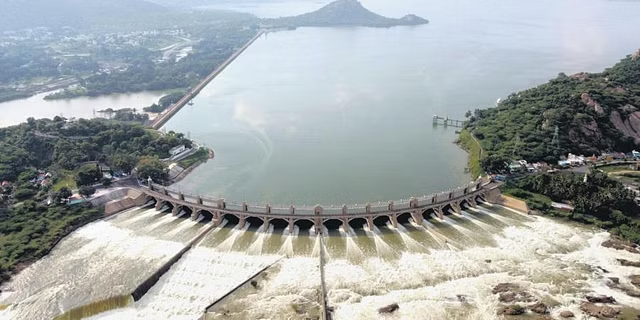Description

Disclaimer: Copyright infringement not intended
Context
- Preparation for kuruvai cultivation in the district as Cauvery water is scheduled to be released from the Mettur dam on June 12.
About Kuruvai Cultivation
- Kuruvai cultivation refers to the seasonal cultivation of paddy (rice) during the Kuruvai season in the Indian state of Tamil Nadu.
- The Kuruvai season, also known as the "short-term" or "lesser" monsoon season, typically occurs between June and September.
- It is characterized by the onset of the southwest monsoon, which brings rainfall to the region.
Commencement of Kuruvai Cultivation
- Farmers in the district are preparing for kuruvai cultivation as Cauvery water is scheduled to be released from the Mettur dam on June 12.
- Preparatory measures are being undertaken by farmers to start cultivation as soon as the river water reaches their fields.
Availability of Seeds for Kuruvai Cultivation
- Adequate stock of fertilizers and seeds has been made available by the Agriculture and Farmers Welfare Department.
- Farmers dependent on canal water have started buying seeds, with some opting for certified seeds from private traders due to limitations on government depot purchases.
Progress in Kuruvai Cultivation
- Farmers who have energized pump sets have already commenced seasonal cultivation.
- Approximately 24,000 hectares of land in Thanjavur district have been planted with kuruvai paddy.
Seed Distribution by Agriculture Department
- The department is responsible for meeting 17% of the seed requirements of farmers.
- For the current kuruvai season, the department needs to supply 477 tonnes of paddy seeds.
- Around 400 tonnes of seeds have already been distributed through government depots, with an additional 60 tonnes in stock.
Availability of Fertilizers
- Sufficient quantity of fertilizers is available in government depots and with private traders
- Urea stock for June is around 11,500 tonnes, exceeding the requirement of 7,000 tonnes.
- Additional urea consignment of 1,200 tonnes is expected to arrive at Thanjavur railway junction.
- Approximately 2,600 tonnes of DAP fertilizer is also available.
.jpeg)
About Mettur Dam
Location
- The Mettur Dam is a large multipurpose dam located in Tamil Nadu, India.
- It is built across the River Cauvery, one of the major rivers in South India.
- The dam is situated in the Mettur taluk of Salem district.
Purpose and Benefits
- The primary purpose of the Mettur Dam is to provide irrigation water to the surrounding agricultural areas.
- The dam has a hydroelectric power station that generates electricity.
- The reservoir created by the dam serves as a vital source of drinking water supply for numerous towns and villages in the region.
- The dam plays a crucial role in flood control by regulating the flow of the River Cauvery during monsoon seasons.
Construction and Features
- The Mettur Dam was constructed between 1927 and 1934 during the British colonial period.
- It is a masonry gravity dam with a height of around 120 feet and a length of about 1,700 meters.
- The dam has multiple spillway gates that can be opened to release excess water during heavy rainfall or floods.
Reservoir
- The dam forms a reservoir known as the Stanley Reservoir, named after Sir Arthur Stanley, the then Madras Governor.
- The reservoir has a substantial storage capacity, allowing it to hold a large volume of water for irrigation, power generation, and water supply purposes.
Cauvery River
Location
- The Cauvery River is one of the major rivers in South India, flowing through the states of Karnataka and Tamil Nadu.
- It originates in the Western Ghats of Karnataka and traverses through various regions before emptying into the Bay of Bengal.
Important cities on Cauvery River
- Important cities on the bank of Cauvery river are Talakaveri, Kushalnagar, Mysuru, Srirangapatna, Mandya, Shivanasamudra, Sivasamudram, Tiruchirappalli, Karur, Thanjavur.
- These cities along the Cauvery River have historical, cultural, and economic significance, attracting tourists and contributing to the socio-economic development of the region.
|
PRACTICE QUESTION
Q. Which of the following states does the Cauvery river flow through?
(a) Tamil Nadu, Kerala, Karnataka, and Andhra Pradesh
(b) Karnataka, Tamil Nadu, Kerala, and Maharashtra
(c) Tamil Nadu, Karnataka, Andhra Pradesh, and Telangana
(d) Karnataka, Kerala, Tamil Nadu, and Puducherry
Answer: (d) Karnataka, Kerala, Tamil Nadu, and Puducherry
|

https://www.newindianexpress.com/states/tamil-nadu/2023/jun/02/mettur-dam-water-release-datenears-tn-farmersbusy-procuring-seeds-and-fertilisers-2581085.html











